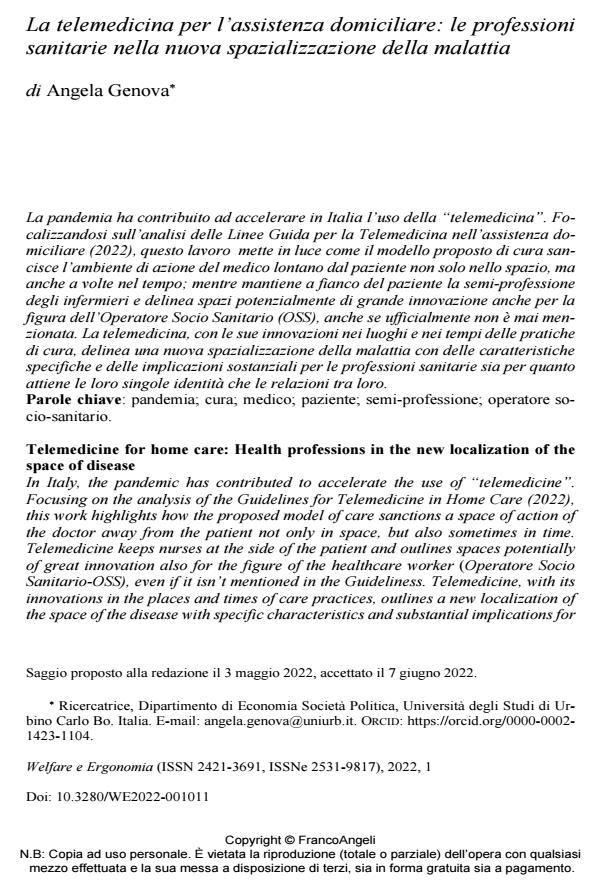Telemedicine for home care: Health professions in the new localization of the space of disease
Journal title WELFARE E ERGONOMIA
Author/s Angela Genova
Publishing Year 2022 Issue 2022/1
Language Italian Pages 16 P. 141-156 File size 270 KB
DOI 10.3280/WE2022-001011
DOI is like a bar code for intellectual property: to have more infomation
click here
Below, you can see the article first page
If you want to buy this article in PDF format, you can do it, following the instructions to buy download credits

FrancoAngeli is member of Publishers International Linking Association, Inc (PILA), a not-for-profit association which run the CrossRef service enabling links to and from online scholarly content.
In Italy, the pandemic has contributed to accelerate the use of "telemedicine". Focusing on the analysis of the Guidelines for Telemedicine in Home Care (2022), this work highlights how the proposed model of care sanctions a space of action of the doctor away from the patient not only in space, but also sometimes in time. Telemedicine keeps nurses at the side of the patient and outlines spaces potentially of great innovation also for the figure of the healthcare worker (Operatore Socio Sanitario-OSS), even if it isn’t mentioned in the Guideliness. Telemedicine, with its innovations in the places and times of care practices, outlines a new localization of the space of the disease with specific characteristics and substantial implications for the health professions. In addition, all these professions have a new identity and new relationships between them.
Keywords: pandemic; care; doctor; patient; semi-profession; social-health operators.
- Le ICT nei contesti di fragilità e ageing: la sfida relazionale Fausto Pagnotta, in WELFARE E ERGONOMIA 1/2023 pp.199
DOI: 10.3280/WE2023-001017
Angela Genova, La telemedicina per l’assistenza domiciliare: le professioni sanitarie nella nuova spazializzazione della malattia in "WELFARE E ERGONOMIA" 1/2022, pp 141-156, DOI: 10.3280/WE2022-001011